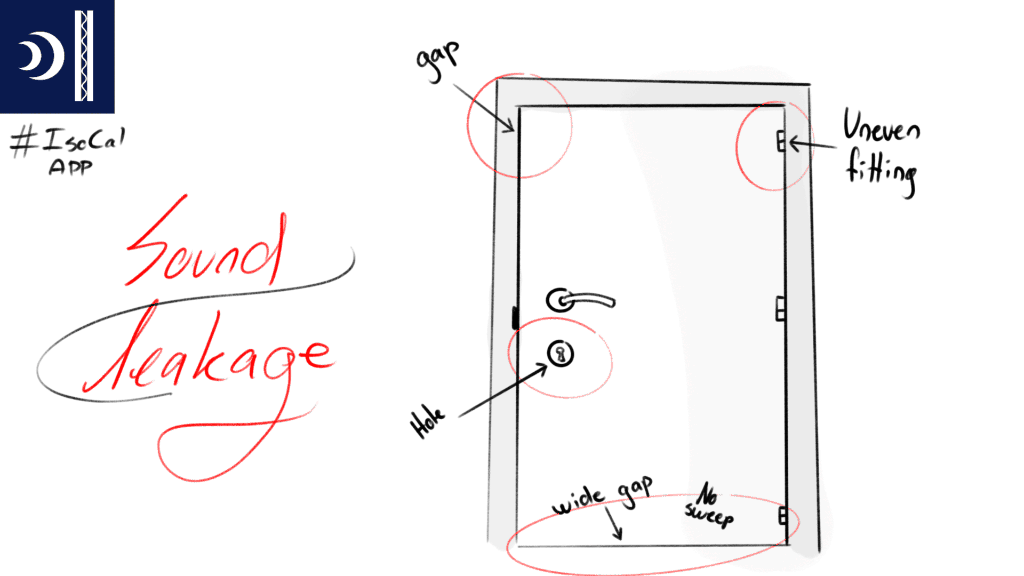Sound Leakage
Be aware of acoustic weakness and help avoid poor Sound reduction performance!
In walls we often find electrical outlets. If these outlets are placed right up against eachother as shown below, they may result in a weakness in the wall where the Sound reduction can have a dramatic performance drop.
A good rule of thumb is to distance these electrical Boxes at least 1m from eachother, In order to avoid a direct pathway for sound transmission.
Why 1m? Usually at 1m the electrical outlets end up being on each their own stud distance and therefore maximizing the direct Sound transmission path.

Sound Leakage Through Doors
You have most likely experienced sound leakage through doors. Usually characterized as a high frequency ‘buzz’.
Sound Leakage in doors most commonly are found near the bottom or the sides.
And most often because the door does not close evenly and tightly, resulting in a poor sound reduction performance.

Typically, in regards to the sound reduction performance, a door is already the weakest link of an enclosure separation, making the issue of sound leakage though the door itself important to correct.
If case you fail to pinpoint the cause of sound leakage, try turning off the light and using a flashlight to determine the cause.
Hint, this will not work for doors with glass panes
This test method is low cost and fairly quick.
Another fairly simple test is to place a speaker on one side emitting white noise.
Then place your ear near any potential weaknesses and try moving your head following the door frame.
Some fairly cheap and easy improvements could be aligning the door properly and tightly (if possible) and Installing a door sweep at the bottom (if none are present).